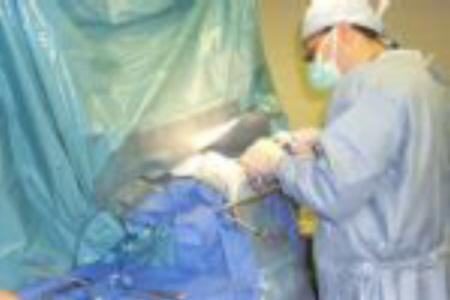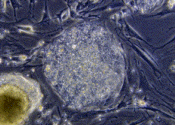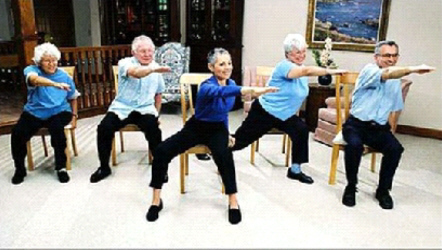.gif) VIARTIS � |
||||||||||||||||
|
� � � � |
TREATMENTS OF PARKINSON'S DISEASE � |
� � � � � � � � � � � � � � � |
||||||||||||||
|
|
||||||||||||||||
|
L-DOPA SINEMET consists of L-dopa and Carbidopa (a dopa decarboxylase inhibitor that� helps to prevent the metabolism of L-dopa before it reaches the dopaminergic neurons). There is also a controlled release version, Sinemet CR, that spreads out the effect of the L-dopa. For more details go to SINEMET and SINEMET CR MADOPAR consists of L-dopa and Benserazide (a dopa decarboxylase inhibitor that helps to prevent the metabolism of L-dopa before it reaches the dopaminergic neurons). There is also a controlled release version called Madopar CR that spreads out the effect of L-dopa. For more details go to MADOPAR and MADOPAR CR RYTARY and NUMIENT both consist of L-dopa and Carbidopa (a dopa decarboxylase inhibitor that� helps to prevent the metabolism of L-dopa before it reaches the dopaminergic neurons). They both combine immediate release L-dopa with controlled release L-dopa. For more details go to RYTARY and NUMIENT DUODOPA is a combination of L-dopa and Carbidopa, dispersed as a viscous gel. Using a patient-operated portable pump, the drug is continuously delivered via a tube directly into the upper small intestine, where it is rapidly absorbed. For more details go to DUODOPA PARCOPA consists of L-dopa and Carbidopa, the same as Sinemet, but is in orally disintegrating tablets. For more details go to PARCOPA STALEVO consists of L-dopa, Carbidopa and Entacapone (Comtan). For more details go to STALEVO. Entacapone (Comtan) inhibits the COMT enzyme, thereby prolonging the effects of L-dopa, and so has been used to complement L-dopa. MUCUNA PRURIENS is a natural vegetable source of therapeutic quantities of L-dopa. For more details go to MUCUNA PRURIENS � DOPAMINE AGONISTS Dopamine agonists are drugs that mimic dopamine by stimulating the dopamine receptors. Besides the side effects they cause, dopamine agonists cause the dopamine receptors to become progressively less sensitive, thereby eventually increasing the symptoms. The most widely used dopamine agonists include : APOMORPHINE (which is sold as Apokyn) is taken via injection or infusion. For more details go to APOKYN BROMOCRIPTINE (which is sold as Parlodel). For more details go to PARLODEL CABERGOLINE (which is sold as Dostinex and Cabaser). For more details go to DOSTINEXPRAMIPEXOLE (which is sold as Mirapex and Mirapex ER). For more details go to MIRAPEX and MIRAPEX ERROPINIROLE (which is sold as Requip and Requip XL). For more details go to REQUIP and REQUIP XLROTIGOTINE (which is sold as Neupro) is applied using a transdermal patch. For more details go to NEUPRO � MAO-B INHIBITORS MAO-B inhibitors do not directly increase the formation of dopamine or its activity. MAO-B inhibitors instead reduce the symptoms by inhibiting monoamine oxidase-B (MAO-B), which reduces the breakdown of dopamine secreted by the dopaminergic neurons. MAO-B inhibitors cause widespread side effects. The most common MAO-B inhibitors are : SELEGILINE (which is sold as Eldepryl). For more details go to ELDEPRYL�RASAGILINE (which is sold as Azilect). For more details go to AZILECT SAFINAMIDE (which is sold as Xadago). For more details go to XADAGO � COMT INHIBITORS COMT inhibitors do not directly increase the formation of dopamine or its activity. COMT inhibitors instead reduce the symptoms by inhibiting COMT, which reduces the breakdown of dopamine secreted by the dopaminergic neurons. The most common COMT inhibitors are : ENTACAPONE (which is sold as Comtan). For more details go to�ENTACAPONEOPICAPONE (which is sold as Ongentys). For more details go to�ONGENTYS TOLCAPONE (which is sold as Tasmar). For more details go to�TOLCAPONE � ANTI-CHOLINERGICS The excessive muscle contraction in Parkinson's Disease is caused when the cholinergic function, which increases muscle contraction, is more powerful than dopaminergic function, which decreases muscle contraction. Instead of increasing dopaminergic function which is what most treatments of Parkinson's Disease aim at achieving, Anti-cholinergics (anti-muscarinics) reduce cholinergic function. Several drugs in this category sometimes help relieve symptoms, particularly tremor. �Anti-cholinergics (Anti-muscarinics) cause very widespread side effects and so are not so commonly used.� They include : BENZTROPINE (which is sold as Benztropine mesylate and Cogentin, which is injectable)� For more details go to BENZTROPINE MESYLATE� and COGENTIN TRIHEXYPHENIDYL (which is sold as Artane and Trihexane) For more details go to ARTANE BIPERIDEN (which is sold as Akienton) For more details go to AKINETON PROCYCLIDINE (which is sold as Kemadrin) For more details go to KEMADRIN
� SURGICAL TREATMENTS
�������������������������������������������������������������������������������������������������������������������������������������������������������������������������������������������������������� �� PHYSICAL THERAPY
� � |
||||||||||||||||
|
� � |
||||||||||||||||
.gif) |
||||||||||||||||
| � | ||||||||||||||||
| �2006-2017 Viartis | ||||||||||||||||
| � | ||||||||||||||||
| [email protected] | ||||||||||||||||



 �
�
